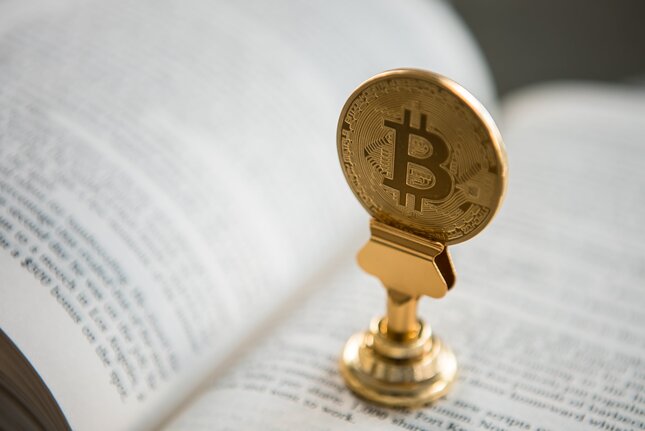Most recent article: India Gold price today: Gold falls, according to MCX data
Gold prices fell in India on Tuesday, according to data from India's Multi Commodity Exchange (MCX).
Gold price stood at 71,777 Indian Rupees (INR) per 10 grams, down INR 123 compared with the INR 71,900 it cost on Monday.
As for futures contracts, Gold prices decreased to INR 70,977 per 10 gms from INR 71,602 per 10 gms.
Prices for Silver futures contracts decreased to INR 81,250 per kg from INR 82,483 per kg.
| Major Indian city | Gold Price |
|---|---|
| Ahmedabad | 74,225 |
| Mumbai | 73,905 |
| New Delhi | 74,145 |
| Chennai | 74,260 |
| Kolkata | 74,230 |
Global Market Movers: Comex Gold price extends losses amid goodish US Dollar rebound
- Friday's release of the US Personal Consumption Expenditures (PCE) Price Index pointed to still sticky inflation and reaffirmed bets that the Federal Reserve will begin its rate-cutting cycle only in September.
- Hawkish Fed expectations act as a tailwind for the US Dollar, which, along with a generally positive risk tone, turn out to be key factors that contribute to capping the upside for the non-yielding Gold price on Comex.
- The global risk sentiment remains well supported on the back of receding fears about any further escalation of conflict between Iran and Israel and the latest optimism over Israel-Hamas peace talks in Cairo.
- Traders, however, now seem to have moved to the sidelines and refrain from positioning for a firm near-term direction ahead of this week's key central bank event risk and important US economic releases.
- The Fed is scheduled to announce its policy decision at the end of a two-day meeting on Wednesday, which will be followed by the release of the closely watched US jobs data, or the Nonfarm Payrolls report on Friday.
- Investors will look for cues about the Fed's future policy decisions and rate-cut path, which, in turn, should influence the USD price dynamics and help in determining the near-term trajectory for the XAU/USD.
- In the meantime, Tuesday's US economic docket – featuring the Chicago PMI and the Conference Board's Consumer Confidence Index – might provide some impetus later during the North American session.
(An automation tool was used in creating this post.)
Gold FAQs
Gold has played a key role in human’s history as it has been widely used as a store of value and medium of exchange. Currently, apart from its shine and usage for jewelry, the precious metal is widely seen as a safe-haven asset, meaning that it is considered a good investment during turbulent times. Gold is also widely seen as a hedge against inflation and against depreciating currencies as it doesn’t rely on any specific issuer or government.
Central banks are the biggest Gold holders. In their aim to support their currencies in turbulent times, central banks tend to diversify their reserves and buy Gold to improve the perceived strength of the economy and the currency. High Gold reserves can be a source of trust for a country’s solvency. Central banks added 1,136 tonnes of Gold worth around $70 billion to their reserves in 2022, according to data from the World Gold Council. This is the highest yearly purchase since records began. Central banks from emerging economies such as China, India and Turkey are quickly increasing their Gold reserves.
Gold has an inverse correlation with the US Dollar and US Treasuries, which are both major reserve and safe-haven assets. When the Dollar depreciates, Gold tends to rise, enabling investors and central banks to diversify their assets in turbulent times. Gold is also inversely correlated with risk assets. A rally in the stock market tends to weaken Gold price, while sell-offs in riskier markets tend to favor the precious metal.
The price can move due to a wide range of factors. Geopolitical instability or fears of a deep recession can quickly make Gold price escalate due to its safe-haven status. As a yield-less asset, Gold tends to rise with lower interest rates, while higher cost of money usually weighs down on the yellow metal. Still, most moves depend on how the US Dollar (USD) behaves as the asset is priced in dollars (XAU/USD). A strong Dollar tends to keep the price of Gold controlled, whereas a weaker Dollar is likely to push Gold prices up.
Information on these pages contains forward-looking statements that involve risks and uncertainties. Markets and instruments profiled on this page are for informational purposes only and should not in any way come across as a recommendation to buy or sell in these assets. You should do your own thorough research before making any investment decisions. FXStreet does not in any way guarantee that this information is free from mistakes, errors, or material misstatements. It also does not guarantee that this information is of a timely nature. Investing in Open Markets involves a great deal of risk, including the loss of all or a portion of your investment, as well as emotional distress. All risks, losses and costs associated with investing, including total loss of principal, are your responsibility. The views and opinions expressed in this article are those of the authors and do not necessarily reflect the official policy or position of FXStreet nor its advertisers. The author will not be held responsible for information that is found at the end of links posted on this page.
If not otherwise explicitly mentioned in the body of the article, at the time of writing, the author has no position in any stock mentioned in this article and no business relationship with any company mentioned. The author has not received compensation for writing this article, other than from FXStreet.
FXStreet and the author do not provide personalized recommendations. The author makes no representations as to the accuracy, completeness, or suitability of this information. FXStreet and the author will not be liable for any errors, omissions or any losses, injuries or damages arising from this information and its display or use. Errors and omissions excepted.
The author and FXStreet are not registered investment advisors and nothing in this article is intended to be investment advice.
Recommended content
Editors’ Picks

GBP/USD edges higher to near 1.2700 ahead of UK CPI inflation data
GBP/USD appreciates due to reduced expectations of another rate cut by the Bank of England this year. The UK’s CPI inflation is projected to increase 2.2% YoY and 0.5% MoM in October.

EUR/USD remains below 1.0600 amid safe-haven flows, awaits ECB Lagarde's speech
EUR/USD faces challenges due to safe-haven flows amid escalating Russia-Ukraine conflict. Traders anticipate that the incoming Trump administration's pro-inflationary policies could support the US Dollar.

Gold looks to test offers at $2,660 amid cautious optimism
Gold price stays on the front foot early Wednesday, looking to regain the $2,650 barrier as the road to recovery extends for the third straight day. Traders now await the upcoming speeches from US Fed policymakers and Nvidia’s earnings report amid lingering geopolitical concerns between Russia and Ukraine.

UK CPI set to rise above BoE target in October, core inflation to remain high
The UK CPI is set to rise at an annual pace of 2.2% in October after increasing by 1.7% in September, moving back above the BoE’s 2.0% target. The core CPI inflation is expected to ease slightly to 3.1% YoY in October, compared with a 3.2% reading reported in September.

How could Trump’s Treasury Secretary selection influence Bitcoin?
Bitcoin remained upbeat above $91,000 on Tuesday, with Trump’s cabinet appointments in focus and after MicroStrategy purchases being more tokens.

Best Forex Brokers with Low Spreads
VERIFIED Low spreads are crucial for reducing trading costs. Explore top Forex brokers offering competitive spreads and high leverage. Compare options for EUR/USD, GBP/USD, USD/JPY, and Gold.